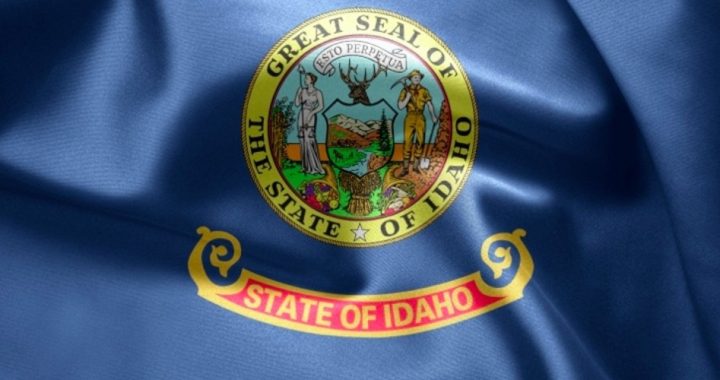
Another state is stepping in and shielding its citizens from constant surveillance by the government or law enforcement.
On April 11, Idaho Governor C.L. “Butch” Otter signed into law the “Preserving Freedom From Unwanted Surveillance Act,” an act reinforcing the Fourth Amendment’s guarantee of “the right of the people to be secure in their persons, houses, papers, and effects, against unreasonable searches and seizures.”
The law amends the Idaho code, placing new restrictions on the use of drones by government or law enforcement, particularly when it comes to the gathering of evidence and surveillance of private property.
Section 3 of the law mandates:
No person, entity or state agency shall use a drone or other unmanned aircraft to gather evidence or other information pertaining to criminal conduct or conduct in violation of a statute, ordinance, regulation or rule, except to the extent authorized in a warrant.
Along those same lines, Section 4 protects private property from the ever-prying eye of government by placing barriers on the buzzing:
No person, entity or state agency shall use a drone or other unmanned aircraft to conduct surveillance of any individual, property owned by an individual, farm or agricultural industry without the consent of that individual, property owner, farm or agricultural industry. An owner of facilities located on lands owned by another under a valid easement, permit, license or other right of occupancy is not prohibited by this section from using drones or other unmanned aircraft to aerially inspect such facilities.
Should police try and submit in court evidence illegally obtained by drone, they would find themselves running headlong into Section 5, which directs that, “No information obtained or collected in violation of the provisions of this act may be admissible as evidence in a criminal proceeding in any court of law in the state or in an administrative hearing.”
In a statement to Reuters given at the time he introduced the bill, Idaho state Senator Chuck Winder explained his impetus for pushing for stricter drone use guidelines.
“We’re trying to prevent high-tech window-peeping,” Winder said.
Winder, his colleagues in the state legislature, and Governor Otter deserve to be praised for their efforts to shore up constitutional protections against unlawful searches and seizures. The time to pass such measures is growing late as the launch date for domestic drone is growing nearer every day.
On February 7, the Federal Aviation Administration (FAA) relented and released an updated list of entities (cities, towns, states, law enforcement agencies, and universities) that have requested and received licenses to deploy drones.
The Electronic Freedom Foundation (EFF) received the list from the FAA as part of a Freedom of Information Act disclosure. According to an EFF statement announcing the release of the new list, there are now more than 81 public entities that have applied to the FAA for permission to launch drones.
Even though it’s rapidly approaching, for many federal lawmakers, the day that the skies of the homeland are buzzing with drones can’t come soon enough.
Why would legislators be so motivated to accelerate the drive to permit civilian drone use?
Money.
A collaboration between Hearst Newspapers and the Center for Responsive Politics paints the pecuniary picture:
The drone makers have sought congressional help to speed their entry into a domestic market valued in the billions. The 60-member House of Representatives’ “drone caucus” — officially, the House Unmanned Systems Caucus — has helped push that agenda. And over the last four years, caucus members have drawn nearly $8 million in drone-related campaign contributions….
And:
House members from California, Texas, Virginia, and New York on the bipartisan “drone caucus” received the lion’s share of the funds channeled to lawmakers from dozens of firms that are members of the Association for Unmanned Vehicle Systems International, Hearst and CRP found.
Eleven drone caucus lawmakers from California, where many aviation firms are located, received more than $2.4 million from manufacturers’ political action committees and employees during the 2012 and 2010 election cycles, according to CRP tabulation of Federal Election Commission reports.
Eight Texas House members in the caucus received more than $746,000. And four caucus members from New York got more than $185,000 from companies connected to the business of unmanned vehicles.
The big winner of the drone manufacturer lobbying lotto was Representative Howard “Buck” McKeon (R-Calif.). According to the investigation, McKeon — co-chairman of the House Unmanned Systems Caucus — received $833,650 in contributions from the drone industry.
Members of California’s House delegation also received significant deposits from drone makers and advocates. Representatives Darrell Issa, Jerry Lewis, Duncan Hunter, and Ken Calvert each received more than $200,000 from this segment of the military industrial complex.
According to the Hearst/CRP investigation, drone makers knew better than to mess with Texas and a few of the Lone Star State’s representatives saw their coffers swell with drone dollars:
Silvestre Reyes (D-El Paso), a former U.S. Border Patrol sector chief who lost his seat in the Democratic primary, received $310,000.
Rep. Michael McCaul (R-Austin), chairman of the House Homeland Security subcommittee on oversight, received $100,000, and Henry Cuellar (D-Laredo) received almost $77,000. The two have pushed for drone surveillance of the U.S.-Mexico border.
Given the amount of money flowing between the drone makers and the lawmakers, it is odd that most Americans have never heard of the Unmanned Systems Caucus.
“It’s definitely a powerful caucus,” said Alex Bronstein-Moffly, an analyst with First Street Research Group, a D.C.-based company that analyzes lobbying data. “It’s probably up there in the more powerful caucuses that sort of is not talked about.” And, he says, caucus members are well placed to influence government spending and regulations.
The influence peddling isn’t restricted to the representatives listed above. According to Bronstein-Moffly’s data, all 58 drone caucus members received money, more than $2.3 million in total contributions from political action committees affiliated with drone manufacturers since 2011.
General Atomics, maker of the Predator drone, is among the top three all-time campaign contributors to Congressmen Calvert, Lewis, and McKeon.
In 2010 and 2012, General Atomics’ PAC paid out over $140,000 in donations to drone caucus members representing states located on the border with Mexico.
A PAC largely financed by Northrop Grumman contributed about $150,000 to 16 congressmen in the drone caucus who represent districts in California, Texas, Arizona, and Nevada.
No wonder these companies are champing at the bit to grease the skids for the removal of obstacles to their overseas sales plans. In a recently published study, the Teal Group estimates that UAV spending will almost double over the next decade from current worldwide UAV expenditures of $6.6 billion annually to $11.4 billion, totaling just over $89 billion in the next 10 years.
“The UAV market will continue to be strong despite cuts in defense spending,” said Philip Finnegan, Teal Group’s director of corporate analysis and an author of the study. “UAVs have proved their value in Iraq, Afghanistan and Pakistan,” he added, “and will continue to be a high priority for militaries in the United States and worldwide.”
With the governor’s signing of S.B. 1067, Idaho joins Virginia in the valiant effort to shore up state sovereignty and guarantee their citizens’ continuing enjoyment of constitutionally protected civil liberties. Although similar legislation is pending in several others towns and states, Virginia and Idaho stand alone as having enacted drone restricting statutes.
Joe A. Wolverton, II, J.D. is a correspondent for The New American and travels frequently nationwide speaking on topics of nullification, the NDAA, and the surveillance state. He can be reached at [email protected].



